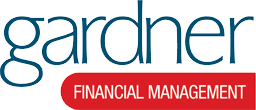Beginning a carry forward exercise now, rather than towards the end of the tax year might be sensible
The March budget saw a relaxation of the annual allowance taper rules, as widely anticipated. However, the rumours of a more radical pension tax overhaul has been left on the back burner for the time being.
That does not mean the idea of reform – and all the revenue it would bring for the Exchequer has gone away. It could well reemerging the autumn budget.
With that in mind starting to consider a carryforward exercise now rather than towards the end of the tax year could be a wise precaution.
When considering carry forward for business owners, care needs to be taken because the complex interaction between employer contributions, employee contributions and the tapered annual allowance rules. The impact of the lifetime allowance may also need to be watched.
However those that run their own companies and control their own renumeration are in a better position to ensure they can make optimum use of the available allowances.
Carry Forward hints and tips
- Work from accurate figures, don’t guess anything
- Always request a pensions savings statement.
- Get full details of income for tapered annual allowance calculations, including salary, bonus dividends rental income and savings income.
- Always double check tapered annual allowance calculation is before and after planning contributions
- Use appropriate calculators (such as hmrc.gov.uk/tools/annualalowancelimit ) and fully document all calculations.
Carry Forward rules
Carryforward rules allow unused annual allowance to be carried forward from the three previous tax years. The key points of carryforward (covering both employee and employer contributions) are:
- The individual must have been a member of a registered pension scheme in the tax year from which the unused allowance is carried forward. There is no requirement for the members have paid contributions during those years
- The annual allowance in the current tax year must be used first before utilising carry forward from previous years.
- The earliest available unused allowance (of the three previous tax years) must be used first.
- Any contribution for carry forward does not need to be made to the same registered pension scheme that the individual was a member of in the previous years.
- Personal contributions need to be within 100% of the individuals relevant UK earnings for tax relief purposes in the actual year the contribution is paid.
- Employer contributions can also be used to carry forward and are therefore subject to the annual allowance. These contributions will be subject to the HMRC (wholly and exclusively) rules for corporation tax relief purposes.
- Carryforward is not available for contributions to defined contribution schemes if the money purchase annual allowance has been triggered, for example by drawing on uncrystallised funds pension lump sum.

